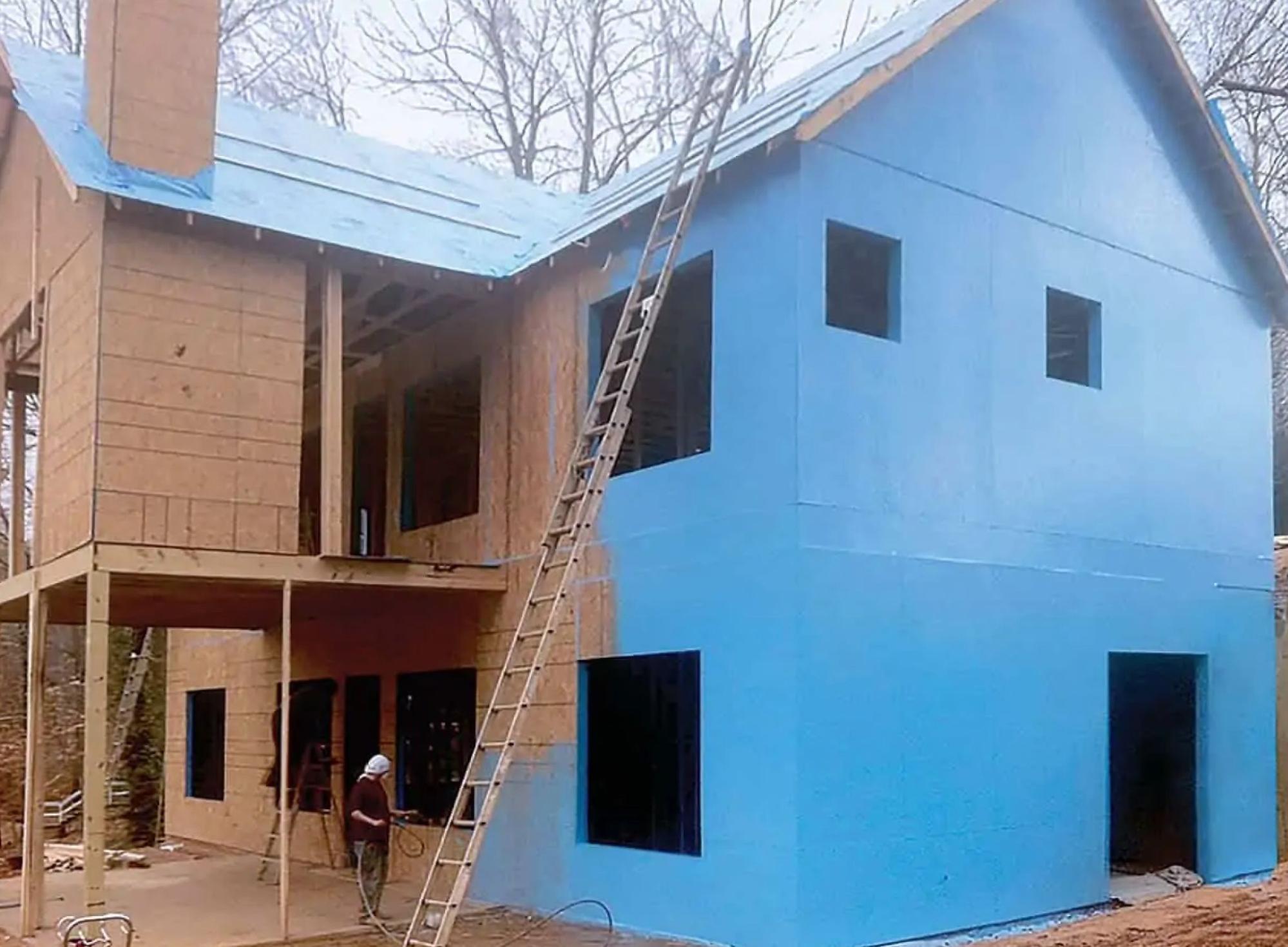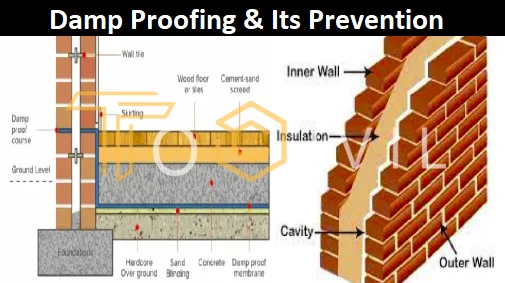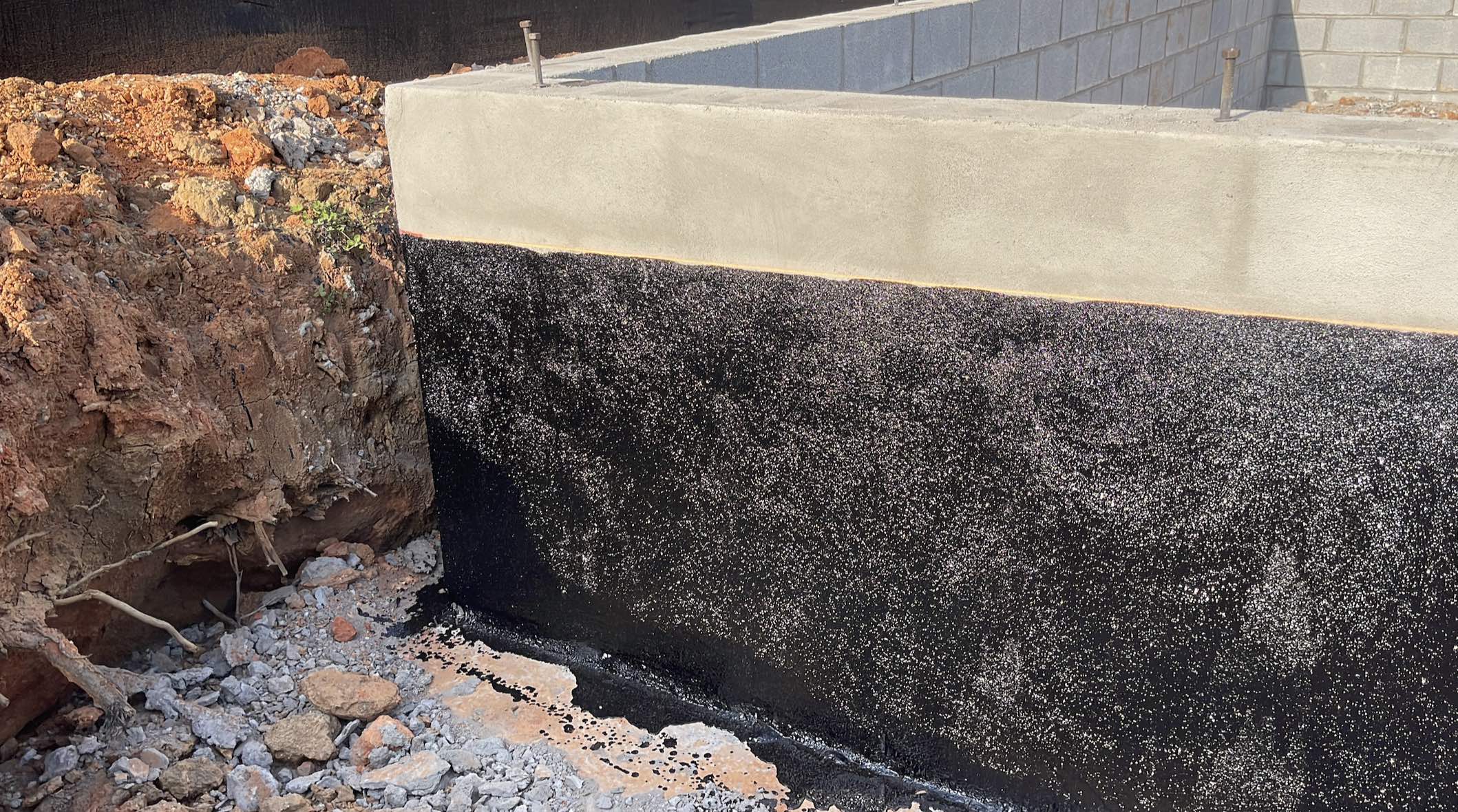The benefits of hiring a mould treatment newcastle professional
Exploring the Numerous Methods and Solutions for Effective Damp Proofing
Wetness in structures presents substantial challenges to both structural honesty and interior air quality. Various strategies and services have actually emerged to combat this prevalent problem. From conventional damp-proof membrane layers to ingenious chemical therapies, each approach uses one-of-a-kind advantages. Understanding these options is necessary for reliable wetness control. Nevertheless, choosing the ideal service relies on particular building problems and requirements, triggering further exploration into the most effective damp proofing techniques available.
Recognizing the Sources Of Dampness
Although wetness can arise from different sources, comprehending these causes is crucial for efficient remediation. Commonly, dampness stems from 3 primary sources: rising moist, penetrating moist, and condensation. Climbing wet takes place when groundwater takes a trip up via porous materials, such as block or stone, frequently due to a lack of an efficient barrier (mould removal newcastle). Permeating wet is typically triggered by exterior aspects, consisting of roofing system leakages, damaged rain gutters, or damaged walls, allowing water to penetrate a residential or commercial property. Condensation, on the other hand, arises from excess wetness in the air, frequently aggravated by bad ventilation and temperature distinctions, causing water droplets forming on surface areas. Recognizing these underlying concerns is crucial, as each type of wetness requires a customized strategy for removal. Correct analysis helps in identifying the most effective solutions, eventually protecting the structural honesty of a building and improving interior air top quality
Traditional Damp-Proof Membranes

Chemical Damp-Proofing Solutions
Chemical damp-proofing solutions use an ingenious strategy to preventing moisture invasion in structures. These approaches usually involve the application of fluid chemicals that permeate masonry and create a barrier against increasing damp. Typically utilized chemicals consist of silanes, siloxanes, and other water-repellent agents that react with surface products to create a hydrophobic layer.The application process generally needs exploration holes right into the walls, injecting the chemical option, and enabling it to treat. This method is particularly useful for older frameworks where typical damp-proof membranes may be impractical. Furthermore, chemical damp-proofing can be less disruptive and much more affordable than extensive renovation projects.While efficient, these options depend upon correct application and environmental conditions for peak efficiency. Routine upkeep and tracking are vital to assure the longevity of the damp-proofing therapy. Generally, chemical damp-proofing represents a versatile alternative for protecting buildings against moisture-related damages
Tooth Cavity Wall Building Methods
Tooth cavity wall surface building and construction methods offer countless advantages, especially in moisture control and energy effectiveness. By including an air void between 2 layers of stonework, these wall surfaces effectively alleviate water access while improving insulation. This mix not just safeguards frameworks from moisture however likewise contributes to minimized energy consumption.
Benefits of Cavity Wall Surfaces
When considering reliable damp proofing approaches, the benefits of dental caries wall surfaces stick out plainly. Cavity wall surfaces consist of 2 different layers, developing an air gap that properly reduces moisture penetration. This design lessens the threat of dampness, as the external wall surface functions as a barrier against rainfall and water access. Furthermore, dental caries walls improve thermal insulation, which adds to energy effectiveness by lowering heat loss. They also offer sound insulation, helping to produce a quieter indoor setting. In addition, the air gap permits for ventilation, which helps in moisture control and decreases the likelihood of mold and mildew growth. These advantages not only improve the general comfort of a structure but additionally add to its long life and structural integrity.
Moisture Control Methods
Reliable dampness control methods are vital in tooth cavity wall building to guarantee lasting security against dampness. One key approach entails the unification of weep openings, which help with water drainage from the cavity, stopping buildup. Additionally, the use of breathable membranes can assist take care of dampness degrees while permitting caught vapor to escape. Proper placement of insulation is likewise critical, as it ought to not obstruct drainage courses. Making sure that the external leaves of the cavity wall are built with waterproof materials boosts general longevity. Regular upkeep checks are necessary to recognize any obstructions or damage early, safeguarding the framework's integrity. Ultimately, a combination of these techniques creates a robust protection against moisture intrusion in dental caries wall surfaces.
Insulation and Energy Performance
Insulation plays a crucial function in enhancing energy performance within tooth cavity wall construction. By including insulating materials, these walls create a thermal obstacle that decreases heat loss and reduces power consumption. Reliable insulation not only assists keep a stable interior temperature but also mitigates the threat of wetness, as it avoids condensation within the wall surface tooth cavity. Different techniques, such as the use of rigid foam boards or mineral wool, can be utilized to achieve perfect insulation performance. Furthermore, proper installment is essential to guarantee that gaps and spaces are decreased, which can or else endanger energy efficiency. Ultimately, a well-insulated dental caries wall surface contributes considerably to overall sustainability and lowers heating and cooling expenses for homeowners.
Outside Damp Proofing Methods
Outside damp proofing techniques are important for safeguarding frameworks from dampness infiltration. Two reliable techniques include the application of water-proof membranes and the installment of French drains. These services aid mitigate water accumulation and protect the honesty of buildings.
Waterproof Membrane Application
While various methods exist for protecting against dampness ingress, the application of water-proof membrane layers remains a highly efficient outside wet proofing strategy. These membranes are normally made from products such as polyethylene, rubber, or changed asphalt, providing a robust barrier versus water infiltration. The installation procedure involves applying the membrane layer to the external surfaces of walls or foundations, ensuring complete protection to avoid leaks. Correct bond and sealing at joints are crucial to optimizing efficiency. Water resistant membrane layers can be applied in numerous types, including fluid finishes and sheet membranes, permitting flexibility based upon the particular requirements of the structure. This method not only protects buildings from wetness but additionally enhances their long life and architectural integrity.
French Drain Installment
One efficient approach for handling groundwater and stopping dampness build-up around a structure's foundation is the installment of a French drainpipe. This water drainage system contains a trench loaded with gravel and a perforated pipeline that redirects surface water away from the structure. Correct installation needs cautious planning, making sure that the drainpipe inclines away from the framework to help with suitable water circulation. Additionally, the area of the drainpipe is essential; it needs to be positioned in areas susceptible to pooling or excess wetness. Regular upkeep, including clearing up debris from the crushed rock and making sure the pipe continues to be unhampered, is essential for long-term performance. Eventually, a well-installed French drain can significantly minimize the risk of water-related issues in cellars and foundations.
Interior Waterproofing Approaches
Interior waterproofing methods are crucial for securing a building's interior from wetness seepage and possible water damage. These techniques usually entail the application of specific products and techniques designed to create a moisture obstacle within the structure. One typical method is the use of water-proof layers or sealants on wall surfaces and floorings, which prevent check here dampness from permeating surfaces.Additionally, mounting interior water drainage systems, such as sump pumps, can successfully handle water accumulation in basements and crawl spaces. Another approach includes using vapor obstacles, which are mounted to hinder moisture activity from the ground into living spaces.Moreover, addressing any splits or voids in wall surfaces or structures with appropriate sealers assures an extensive defense against water intrusion. By executing these interior waterproofing techniques, home owners can greatly minimize the threat of mold development, architectural damage, and other moisture-related concerns. Appropriate implementation of these techniques is necessary for long-term security and building stability.
Routine Maintenance and Examination Practices
Regular upkeep and evaluation methods are important for ensuring the long-term effectiveness of damp proofing remedies in any kind of building. Routine checks make it possible for building proprietors to identify early indications of moisture breach, such as peeling paint, mold development, and moldy odors. These signs can indicate underlying concerns that require instant attention.Inspections should be carried out at the very least each year, concentrating on vulnerable areas like cellars, crawl areas, and outside walls. Throughout these assessments, homeowner ought to analyze sealants, water drainage systems, and ventilation to validate they function correctly.Additionally, maintaining downspouts and gutters is necessary, as clogged systems can result in water buildup near the structure. Executing a routine maintenance routine, along with prompt fixings, can significantly extend the life expectancy of wet proofing measures and secure the structural honesty of the structure. Proactive procedures ultimately contribute to the total health and wellness of the living atmosphere.
Frequently Asked Concerns
Just How Lengthy Does Damp Proofing Commonly Last?
The duration of damp proofing effectiveness differs, normally lasting in between 20 to 50 years. Aspects such as application top quality, environmental problems, and maintenance methods substantially influence the long life of the damp proofing therapy.

Can I Damp Proof My Home Myself?
The individual pondered the feasibility of DIY damp proofing. With appropriate research study and the best products, it is feasible. Nevertheless, they also recognized the importance of specialist advice to ensure lasting effectiveness and prevent future concerns.
What Are the Indications of Inefficient Damp Proofing?
Indications of ineffective damp proofing consist of relentless stuffy odors, visible mold development, peeling paint, damp spots on walls, and timber degeneration - mould removal newcastle. House owners should attend to these problems immediately to stop more damage and health and wellness problems
Does Damp Proofing Affect Indoor Air Quality?

Just How Much Does Specialist Damp Proofing Cost?
Specialist wet proofing prices differ considerably, typically varying from $1,000 to $5,000 depending on the residential property's size, the extent of the wet issue, and chosen methods. Each circumstance calls for a tailored evaluation for precise rates. Frequently, wetness originates from 3 main resources: rising wet, passing through moist, and condensation. When taking into consideration reliable damp proofing methods, the benefits of dental caries wall surfaces stand out plainly. External damp proofing techniques are vital for safeguarding frameworks from moisture infiltration. While various methods exist for stopping wetness ingress, the application of water-proof membranes stays a highly efficient exterior moist proofing technique. Indications of ineffective moist proofing consist of consistent moldy odors, noticeable mold development, peeling paint, moist spots on walls, and timber decay.